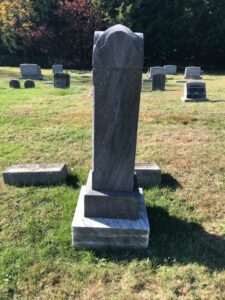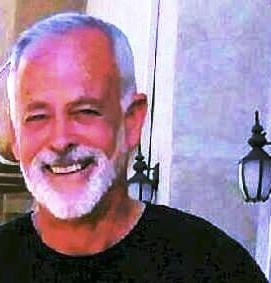 (Author’s note: The following is an interpretive account of the life of Leah Ann Rickards (ca. 1836–1913), my great-great-grandfather John Henry O. Record’s sister. This account is presented in three parts, and is based on family papers and letters, along with vital and census records as available. These posts are my attempt at giving Leah a voice. Please forgive any historical inaccuracies, misrepresentations or presumptions, literary license, or otherwise.)
(Author’s note: The following is an interpretive account of the life of Leah Ann Rickards (ca. 1836–1913), my great-great-grandfather John Henry O. Record’s sister. This account is presented in three parts, and is based on family papers and letters, along with vital and census records as available. These posts are my attempt at giving Leah a voice. Please forgive any historical inaccuracies, misrepresentations or presumptions, literary license, or otherwise.)
“Annie, Annie… Wake-up Annie…” Those words called out to her in her sleep. Leah had been lost in her fancies and reveries, so very tired, with those words only making distant purchase in her mind. These days, more often than not, she dreamt of John Stack, and of her sweet boy Levin, now both gone to their long home. Sometimes these dreams changed into terrors, and she was that “LEAH…” again, and once more under old Fisher’s harsh hand and foul breath. Most commonly, she was simply “Ann Jane,” fearless and spirited Ann Jane, in love, wandering the nearby Marshyhope with her John Stack. In recent years, she’d given herself a new appellation, that of “Laura Ann.”
The name of “Laura” had fallen off her dog-eared pages of Godey’s[1] and Harper’s – the ones she’d secreted away. The spirit of her Laura Ann was spelled out there, in the lives that she, for better or worse, could never read about herself. Laura ‘spoke’ to her – of the ‘clever folk’ – and in the ‘picture tales’ told to her by those who could read, transporting her away, through images, and the pretty cartes de visite that had recently made their way to the Eastern Shore. In her mind Laura elevated her, away from the moil, enticing her far away, where she was pretty and quite ‘afternoonified’ as she danced with friends to a Virginia Reel.[2]
The spirit of her Laura Ann was spelled out there, in the lives that she, for better or worse, could never read about herself.
“Annie, Annie… Wake-up Annie…” she heard him say. “Oh, Neego, please, just let me close my eyes for a moment longer,” she thought to herself. Yes, it was Neego, her Neego calling her back from her reverie. Funny, how it had always been Abednego.[3] She remembered seeing him about town in Hurlock, and around Fork, but back in those long ago days she’d paid him no mind. Plain of countenance, he was weathered from both years in the fields and time at sea.
At first it seemed a fluke to Leah that he should be everywhere she was all at once, even so far away as Williamsburg to offer comfort when George had died,[4] and once down at Galestown, helping to give her a voice in settling claims against Will Peart.[5] Very ready to lend her a hand, he was always there repairing a broken wheel on a borrowed cart or to spare her an obligation she could ill afford. No dreamer himself, and forthright, he was disposed to live within his means.
It should have come to no surprise to her when he asked her to come care for his household, such as it was for a single man. There was no barter or trade entered into with regard to her five children – and she was able to offer only scullery, contributing no more to their economy than pennies and dimes from the chrisms and tonics she sold to mid-wives. She’d been schooled in her use of medicaments by a freed slave who was taught by Miss Tubman,[6] down Cambridge way. Leah had sought knowledge of such remedies to help her ailing mother Susanna, and to keep her children free from ague. She’d been pleased to pass on her ‘doctoring ways’ to her children, but none had druthers to learn it, save for her eldest son by Will Peart, a boy she’d named George.[7]
Neego had called her his housekeeper – as was customary at the time, but soon enough they would spend hours up late, together talking or laughing about the collection of Spadefoots[8] her youngest Robert had hidden in the larder as pets. Her life in Abednego’s house was at once ordinary, hard dealt, and rewarding. And before she knew it, the days with Neego had passed into years, and Dorchester County be damned, she had not felt at all poorly in sharing the bed of this good and gentle man. In light of this, indeed in light of it all, on 18 November 1884 she married Abednego Milligan. Or rather Laura did.[9] Abednego had always called her his “Annie,” but he indulged her on their wedding day, she presenting herself for their nuptials that day as “Laura Ann [sic] Pierce” when she married her best friend, Neego Milligan.
*************************************
She’d heard that they’d come looking for her, but why she couldn’t say. It felt that she’d been gone forever, Neego too, far past her memories of the Marshyhope, or her later years when Neego had moved them all northeast into Delaware. She didn’t mind really, that they were looking for her. It had been like a spring rain on her face, rather waking her up as if from the deepest sleep. She heard them, and somehow knew them, though she wondered if they were kin of her own. First it had been her brother’s child, John Henry’s little girl Grace, come calling, though by then Leah reckoned she (Leah) had been gone from this world well over fifty years.[10]
Little Grace had come so far, all the way from California, visiting courthouses and libraries, finding only burned out records and little in the way of memories.
Little Grace had come so far, all the way from California, visiting courthouses and libraries, finding only burned out records and little in the way of memories. Grace had trekked all the way over to Carney Point too, to see her Ruth, Mary Wesley’s youngest, and Leah’s granddaughter.[11] Grace, who had visited and coveted a candy dish given to Mary Wesley Stack by her (Leah’s) brother John Henry – but not said a word.[12] Ruth, wonderfully vigilant to her grandmother’s memory – telling Grace all about her father’s sister, a woman who Grace would later record in family records as …”Laura Ann.”
Honestly, how was a spirit supposed to get any rest around here? There was a kind woman in Florida, a relative of John Stack’s, who had taken up an interest in her life and knew her so very well. She didn’t understand why; couldn’t see what was so interesting about herself, she, a woman who’d survived old Tom Fisher, and who’d pined away for John Stack. (Lord, she still did miss that man.)
 The well-worn gravestone of Leah Ann Jane (Rickards) (Fisher) (Stack) (Peart) Milligan (1836?–1913) and her husband Abednego Milligan (1842–1908) at Newark Union Cemetery in Wilmington, Delaware. Image courtesy of FindAGrave.com contributor Norman E. Milligan III
The well-worn gravestone of Leah Ann Jane (Rickards) (Fisher) (Stack) (Peart) Milligan (1836?–1913) and her husband Abednego Milligan (1842–1908) at Newark Union Cemetery in Wilmington, Delaware. Image courtesy of FindAGrave.com contributor Norman E. Milligan III
Then there was that kid in California (well, he was certainly no kid anymore), another one of John Henry’s get, asking after her and her brood, even asking after Will and Neego, too. Didn’t he have better things to do? He’d been asking about her gravestone, wanting a photograph or something like. She’d felt reluctant to tell them where she was, where that gravestone was, so for awhile she’d just kept it to herself, before she let on about it. It didn’t seem quite polite to talk about oneself.
She thought she was a bit embarrassed by it all, about her gravestone too, though she and Neego had given their all in saving for it. Dear Neego, he’d wanted her to have something so grand, something they could be proud of and remembered by. She saw that their stone had grown worn and faded and hard to read these past few years. Had she and Neego been gone that long? She thought she was afraid that they’d think too poorly of her – and of Neego, too – or maybe that none of her kids had come round to tend it.
But in the end she figured that they were good folks, they who’d come to look for her, and truth be told, they were her folks, too. So she’d ante’d up, and whispered to them about where all the proper paperwork was, sending it their way so that they could find their well-worn gravestone. The more she considered it – she wasn’t embarrassed anymore at all. She’d lived a good life, and one she could be proud of. Leah Ann, Ann Jane, and Laura, her story told, and finally, perhaps, a little more at peace.
Notes
[1] Godey’s Lady Book, aka Godey’s Magazine, per Britannica.com, published 1830–98.
[2] A popular dance in the mid-nineteenth century.
[3] Abednego Milligan (1842–1908), Leah’s fourth husband.
[4] George Records (1843–1864), Leah’s brother.
[5] William Thomas Peart (ca. 1833–before 1880?), Leah’s third husband.
[6] Harriet Tubman of Cambridge in Dorchester County, Maryland.
[7] George Washington Peart (1867–1917). The Evening Sun, Baltimore, Maryland (17 August 1917), 3, refers to him as a “Medicine Man,” selling his “good-for-all-ailments” medicine, and easily recognized on the streets [of Baltimore] by “his raven-black locks hanging below his broad-brimmed hat.”
[8] Per marylandbiodiversity.com, a species of toads found in Maryland.
[9] usgwarchives.net, Dorchester County, Maryland marriage records for “Abednego Milligan & Laura Ann [sic] Pierce.”
[10] Grace (Record) Andruss (1893–1973), a daughter of Leah’s brother John Henry O. Record.
[11] Ruth Viola (Bryan) Shinn (1900–1968), Leah’s granddaughter.
Share this:

About Jeff Record
Jeff Record received a B.A. degree in Philosophy from Santa Clara University, and works as a teaching assistant with special needs children at a local school. He recently co-authored with Christopher C. Child, “William and Lydia (Swift) Young of Windham, Connecticut: A John Howland and Richard Warren Line,” for the Mayflower Descendant. Jeff enjoys helping his ancestors complete their unfinished business, and successfully petitioned the Secretary of the Army to overturn a 150 year old dishonorable Civil War discharge. A former Elder with the Mother Lode Colony of Mayflower Descendants in the State of California, Jeff and his wife currently live with their Golden Retriever near California’s Gold Country where he continues to explore, discover, and research family history.View all posts by Jeff Record →